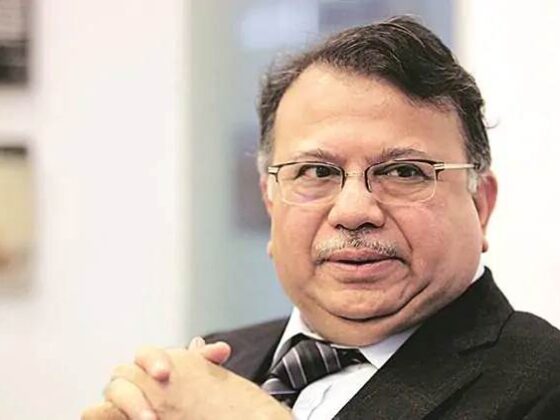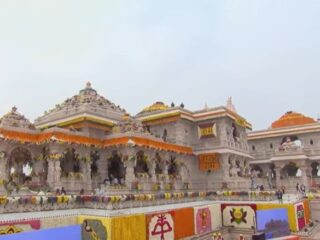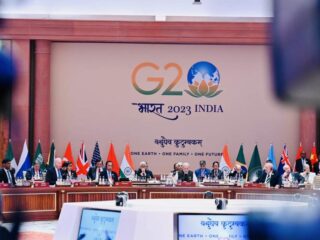Irfan Engineer and Neha Dabhade
(Secular Perspective October 16-31, 2020)
Hathras gang rape and the response to the crime by the state of Uttar Pradesh and various sections of the society is an interesting reflection on the times we are living in, also reflecting our moral goals and collective ideals. It also exposes out the chinks in our democracy and democratic institutions. Hathras gang rape was not only about the ghastly violation of a woman’s body which resulted in her death which in itself should be condemned in no uncertain terms, but also state’s approach to this incident has revealed existing faultlines in the society and polity based on caste, gender and religion. The response of the state is located in the overall ecosystem created by the ideological tilt and policies pursued by the state over a period of time. In this article, the authors would like to map this very response and the ecosystem has contributed to perpetuate these violations.
Response of the state to Hathras:
To begin with, the State officials instead of believing the statement of the 19 year old Dalit victim who died shortly after giving the statement identifying the four accused and recounting the horrors of the gang rape went in a mode of denial. Based on the forensic examination report which found no evidence of rape, the administration and the local BJP leaders claimed that no rape had taken place in this case. There have been glaring and unpardonable lapses in the investigation, which is evident from the fact that the forensic examination of the victim was conducted only on 22nd September, 8 days after the rape took place and the police sent vaginal swabs from the victim 11 days after the occurrence of rape. Semen can be found in the vaginal swabs only in the first 72 hours or in four days after the rape. What can possibly explain this procedural delay?
After the obvious lapses in investigation, what has come under wide criticism from all quarters is the way the body of the victim was cremated without the consent of the family. It is important to note here that the victim came from a poor Dalit family. The family was outraged and in grief after the death of their daughter. The victim was allegedly dragged with her dupatta from the field she had gone to cut grass with her family. She was dragged by the alleged four accused and assaulted till her spine broke and tongue was cut. The family was not handed over her body for a dignified cremation. Instead the police brought the body from Delhi to Hathras and took it to a field for cremation in the dark of the night.
While the family of the victim was locked in their house and village was sealed up, the body was cremated hastily. The mother of the victim kept begging with the police to view the body of her daughter one last time, but the police made a human chain around the body and cremated it at night against the Hindu tradition.
The family alleges that they were intimidated the District Magistrate of Hathras, Pravin Luxkar. In a leaked video, the Hathras DM was seen clearly threatening the family to go soft on their stance. DM Laxkar is heard saying, “Half of the media people have left today, the other half will leave by tomorrow. Only we will stand with you. It is up to you whether you want to change your statement or not (The Wire, 2020). No media was allowed to speak to the family and the phones of the family members were taken away. Cameras were installed outside the house of the victim for surveillance to keep a tab on whom the family is talking to. Civil society organizations and leaders of opposition who wanted to pay respect to the victim and offer condolences to the bereaved family were roughened up and not allowed to meet the family. All this could not have been the decided by the district level officials, and why would they do so? The orders to do all this could be coming from the highest state officials in Lucknow.
What explains these actions of the State? Does it point towards a cover up by the state of the gruesome crime against a Dalit woman? It appears so. The senior national level BJP leaders have been conspicuous by their silence. Emboldened by the actions of the administration, local BJP leaders have come out in support of the accused and even gone to the extent of questioning the character of the victim and claiming that she had an affair with one of the accused. BJP MLA from Ballia, Surendra Singh said that “sanskar (education in traditional values) should be instilled in girls to prevent incidents of rape“, putting the onus of prevention of rape on women and not men or administration (Indian Express, 2020). Ranjeet Bahadur Srivastava, a BJP leader from Barabanki, alleged that the victim was not raped but had an affair with one of the accused and thus the accused were innocent. He claimed, “the victim must have called the boy to the field because they were having an affair. This news is already out on social media and news channels. She must have got caught after that” (Rehan, 2020).
These derogatory attitudes towards women, particularly dalit women, stems from the notion of privilege from both the locations of caste and gender. For most of upper caste Hindu males in India, institutions of caste system and patriarchy have given them power over women and Dalits where the labour, body and mind of the Dalits is at their service and Dalit women can be sexually assaulted at their will. Clearly, caste and patriarchy are so deeply entrenched in the Indian society, informs social hierarchy and is perpetuated by the institutional structures of Indian democracy that are controlled by the upper caste and upper class – Mahatma Phule called them shetji-bhatji. Mere formal equality guaranteed in the constitution or laws like abolition of untouchability, equal opportunities etc. have failed to materialise in everyday life of women, Dalits and middle castes. In this scenario where equality remains not even an ideal to strive for by the caste groups deriving privileges from the caste system, the state has to intervene positively and decisively to enforce laws impartially. In the case of Hathras, the state was found in some way not only looking the other way but actively covering up for the accused through casual and negligent investigation and alleged intimidation of the family.
On the one hand, the state didn’t do enough to protect the victim or bring the accused to swift justice, on the other hand it didn’t allow democratic space to civil society organizations, media or even the opposition leaders to meet the family or raise questions which keeps any democracy thriving. The civil society which acts as a watch guard for democracy and equality is being muzzled into silence. All the muzzling is sought to be justified by the State by citing “international plot” to instigate riots along caste lines and defame the state government. Yogi Adityanath, rubbishing all the criticism his government faced for handling Hathras said, “some anarchists who can’t bear to see development in the state are conspiring to promote communal frenzy and violence on caste lines” (Mishra, 2020). This ecosystem created by inaction in the face of crimes against Dalits and women has bred more violence. While Unnao rape case in 2017 showed the low depths of depravity, even after Hathras and the national outrage it evoked, rapes have taken place. A 4 year old was allegedly raped by her relative in Sasni, Uttar Pradesh. A 22-year-old Dalit woman from Balrampur was raped brutally and died soon after. In another incident, a Dalit teenage girl committed suicide after being gang raped in Chitrakoot district of UP. A 44-year-old married Dalit woman was allegedly raped by four men in Bhadohi city of UP.
Communalism in UP and its linkages:
The important question that begs for attention here is that how did the state of UP come to state of lawlessness? The answer is that this lawlessness stems from an entire ecosystem dominated with unbridled caste system, patriarchy and a potent lethal dose of communal agenda. One has to see these three factors as being interconnected and intertwined. The communal agenda in UP signifies strengthening of caste system as also patriarchy. The communal agenda of the UP government headed by Yogi Adityanath has unfolded in a multiple ways- the strong network of cow vigilantism where innocent Muslims and Dalits are targeted with impunity, then changing the names of the cities which were “Muslim sounding”, Taj Mahal controversy, creation of the anti-Romeo squads, high numbers of communal riots etc.
What started with Mohammad Akhlaq’s morbid lynching in 2015 has only gotten worse with the coming of the regime Yogi Adityanath in 2017. By the end of 2018, UP had recorded 69 percent of total cases in the country of its bovine related violence according to the Factchecker since the Bhartiya Janata Party and Yogi Adityanath came to power in Uttar Pradesh in March 2017 (Saldanha, 2018). Some of the cases among these were of lynchings of 45-year-old Qasim Qureshi in Hapur, western UP, 20-year-old Shahrukh Khan in Bareilly, northern UP, murder of a police inspector, Subodh Kumar Singh in Bulandshahr.
Similarly, UP has also been one of the states that record the highest number of communal riots in India. For instance, as opposed to the claims made by the Chief Minister that there have been no communal riots in his regime, Hansraj Gangaram Ahir, Union minister of state for home affairs, told the Lok Sabha on December 11, 2018 that, in comparison with 2014, the number of incidents of communal violence was 32% higher in 2017. Forty-four people died in such incidents. In comparison, 22 people died in incidents of communal violence in 2015 (Mishra, 2019). Incredibly, in spite of the increase in the number of communal riots in the state, the Yogi Adityanath government pursued to withdraw cases related to the Muzzaffarnagar riots of 2013 in which BJP leaders were accused. It is worth noting that the major riot that took place in Muzzaffarnagar vastly benefited the BJP and dislodged the Samajwadi Party from its 14 year rule s in the state. This goes on to demonstrate that the ruling dispensation wanted to award impunity to its members to instigate violence and also protect it from the repercussions of law and order. This “jungle Raj” or lawlessness built on the edifice of communalism has spiraled into a total breakdown of law and order resulting into ghastly crimes against the marginalized like the Dalits and women.
One of the ways in which democracy and democratic institutions are subverted in UP is by making questionable policies and laws targeted to oppress the marginalized. This is a potent weapon in the hands of the regime which has a dubious record in executing encounters. That encounters were used to target Muslims is not a secret. The overall narrative is to justify such action against Muslims is that Hindus are under threat from the Muslims. The regime resorted to booking them under laws such as the Unlawful Activities (Prevention) Act and the National Security Act, which are intended for criminals posing a threat to state security and under which individuals can be held without charge for up to 12 months. In 2017, 160 Muslims were arrested under the NSA.
Yogi Adityanath launched Operation Clean, in which the police was encouraged to open fire on those suspected of a crime. Soon after, he informed the state assembly that 40 criminals had been killed in police shootouts. There were reportedly over 1,100 shootings of this kind between February 2017 and February 2018, a record (Jaffrelot & Rizvi, 2019). However, encounters as a tool has not been restricted to target the Muslims alone and is now used against any innocent or to eliminate any gangster or element who poses a risk to the ruling dispensation. The latest example was that of the encounter of Vikas Dubey in Kanpur who was suspected to have information detrimental to the interests of the government and political leaders whose patronage he earlier enjoyed (The Wire, 2020).
The ruling dispensation is crushing voices of dissent and those demanding accountability and equality. This is evident from its actions of political vendetta against Bhim Army and its head. Most glaring was the way, the protestors against the Citizenship Amendment Act were illegally hounded and shamed publicly by putting up hoardings bearing their names, photographs and addresses on main roads and junctions in cities in UP asking them to pay up for damage incurred to public property during anti-Citizenship Amendment Act protests. The protestors were accused of vandalism and were threatened with confiscation of their property if they failed to pay the compensation (Indian Express, 2020). This shaming of the protestors at the directive of the Chief Minister was termed as “unwarranted interference in the privacy of people” and violative of the Constitution by the Allahabad High Court (Gaur, 2020). The anti- CAA/NRC protests unveiled the grossly arbitrary and frighteningly vindictive nature of the UP government. Additionally, the Muslims were singled out and sent notices to pay compensation for recovery of damage to government property including police motorcycles, barrier, dandas. Some of those who were sent notices were arrested under false charges. This arbitrarily and vindictive action revealed the moral decadence of the state administration.
Conclusion:
Keeping in mind the incidents like Hathras and others, it won’t be an exaggeration to conclude that the law and order situation in UP is informed more by the interests of the upper caste than by the law passed by the legislature. Worse still, the law enforcement agencies have become handmaid of the ruling dispensation to wreck vendetta on political opponents, dissenters and marginalized communities. This regime has successfully undone whatever little semblance of law and order that predecessors had managed to bring. The situation has deteriorated and in fact reversed much contrarily to the promises and claims of good governance made by the Chief Minister. And what is instrumental in this spiraling is the communal agenda and the way it was used as a prop for allowing lawlessness to perpetuate and thrive. This communal paranoia created by the state has assumed a form of a Frankenstein which has become an unmanageable monster in the hands of the rulers and wreaking havoc threatening to decimate the rights of the marginalized and overall democracy.
Bibliography
Gaur, V. (2020, March 10). Politics. Retrieved October 15, 2020, from The Economic Times: https://economictimes.indiatimes.com/news/politics-and-nation/hc-asks-up-govt-to-remove-name-and-shameposters-of-anti-caa-protesters/articleshow/74549799.cms
Indian Express. (2020, October 5). Retrieved October 15, 2020, from Indian Express: https://indianexpress.com/article/india/hathras-rape-case-surendra-singh-women-sanskar-remark-6701976/
Indian Express. (2020, March 6). Retrieved October 15, 2020, from Indian Express: https://indianexpress.com/article/cities/lucknow/lucknow-anti-caa-protesters-photos-banners-public-properties-damage-6302933/
Jaffrelot, C., & Rizvi, S. H. (2019, March 25). Indian Express. Retrieved October 15, 2020, from Indian Express: https://indianexpress.com/article/opinion/columns/lok-sabha-elections-uttar-pradesh-yogi-adityanath-up-police-law-and-order-5640693/
Mishra, A. (2020, October 6). Indian Express. Retrieved October 16, 2020, from Indian Express: https://indianexpress.com/article/india/hathras-protests-conspiracy-says-yogi-adityanath-police-file-21-firs-across-up-6704519/
Mishra, D. (2019, January 4). Communalism. Retrieved October 14, 2020, from The Wire: https://thewire.in/communalism/yogi-adityanath-up-riots-facts-check
Rehan, M. (2020, October 7). India Today. Retrieved October 15, 2020, from India Today: https://www.indiatoday.in/india/story/such-women-are-always-found-dead-in-millet-fields-bjp-leader-s-shocking-remark-on-hathras-victim-1729065-2020-10-07
Saldanha, A. (2018, December 4). Bloombergquint. Retrieved October 15, 2020, from Bloombergquint: https://www.bloombergquint.com/politics/uttar-pradesh-emerges-as-deadliest-state-for-cow-related-violence
The Wire. (2020, October 2). Retrieved October 15, 2020, from The Wire: https://thewire.in/government/leaked-video-dm-threat-hathras-gangrape
The Wire. (2020, July 10). Retrieved October 15, 2020, from The Wire: https://thewire.in/government/vikas-dubey-killed-encounter-uttar-prades







